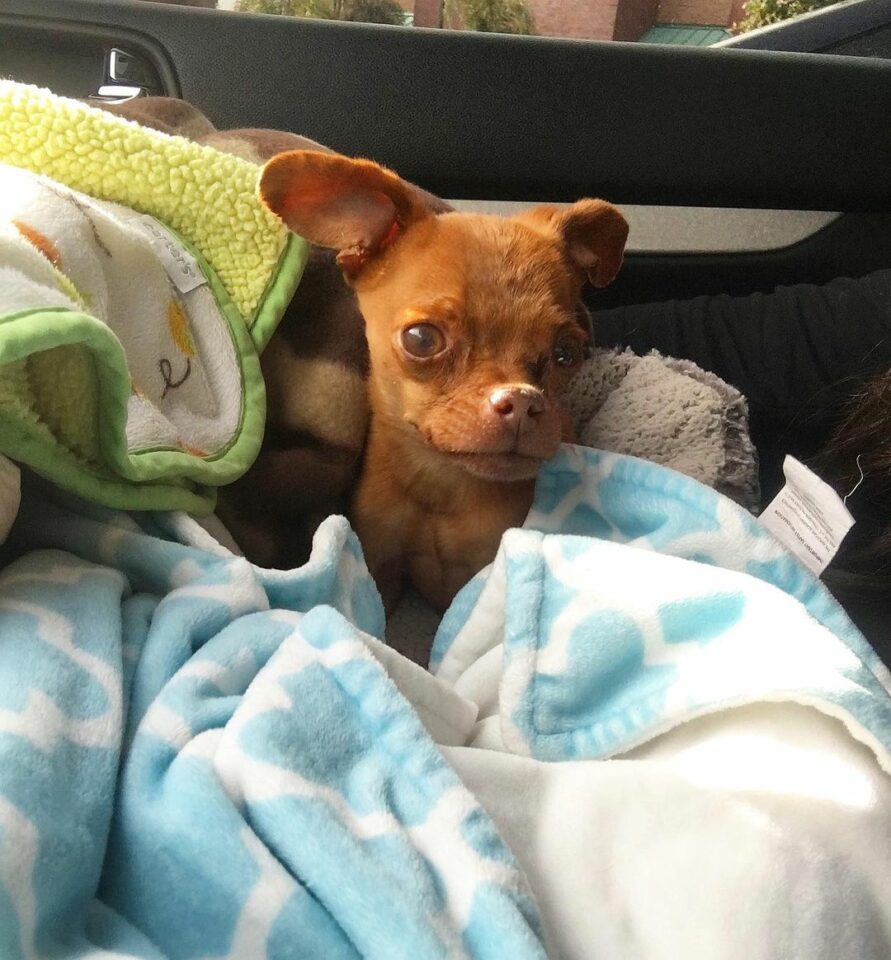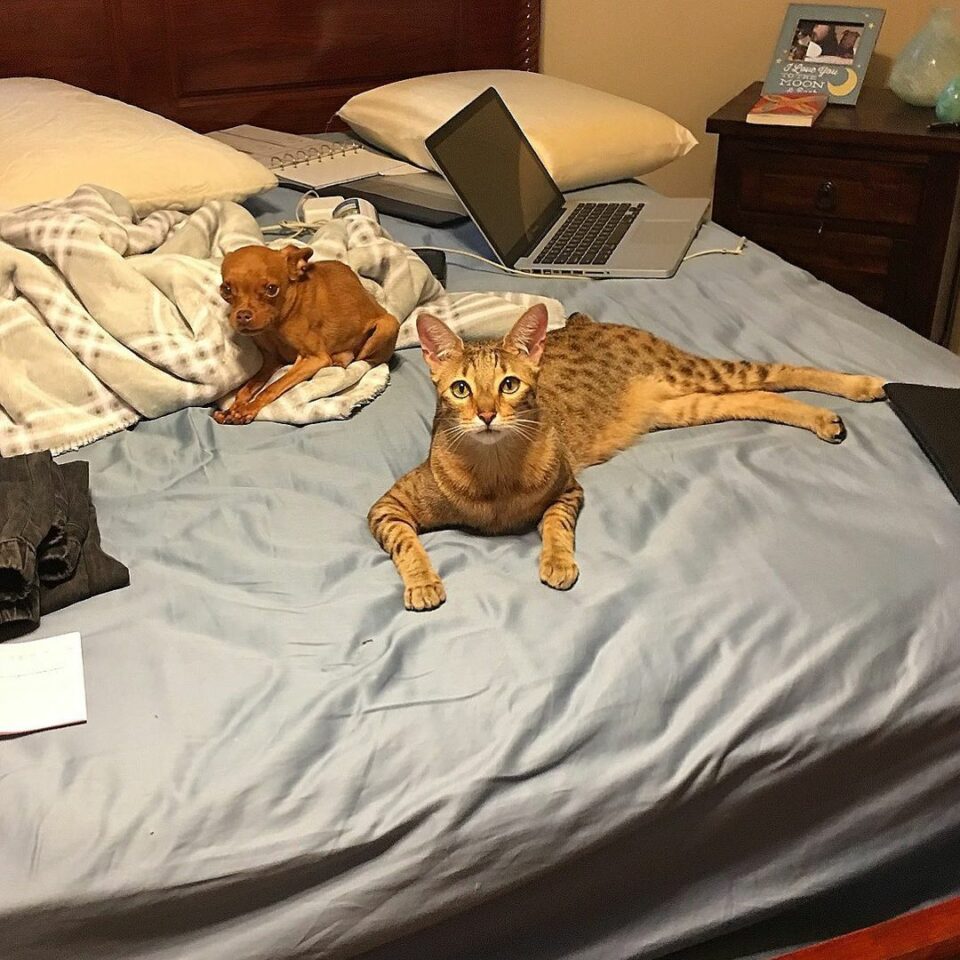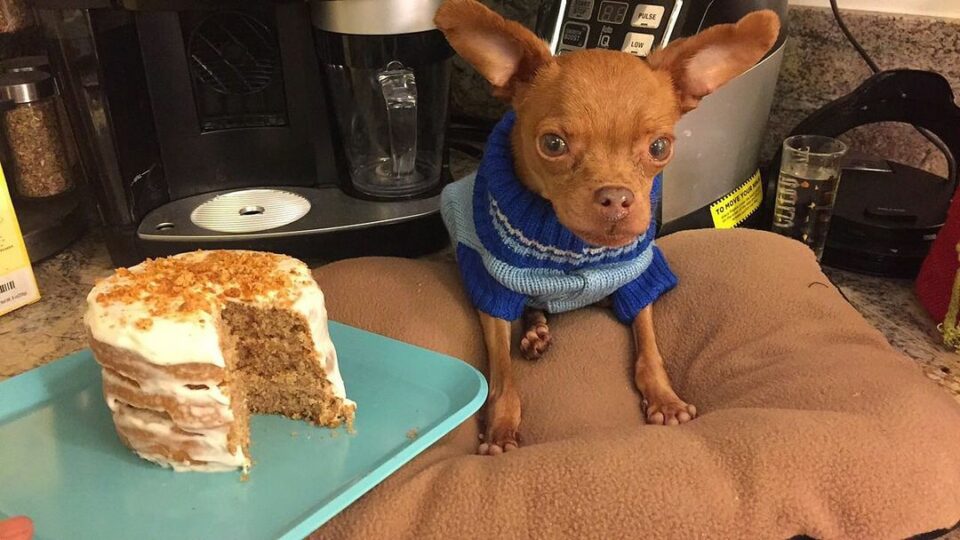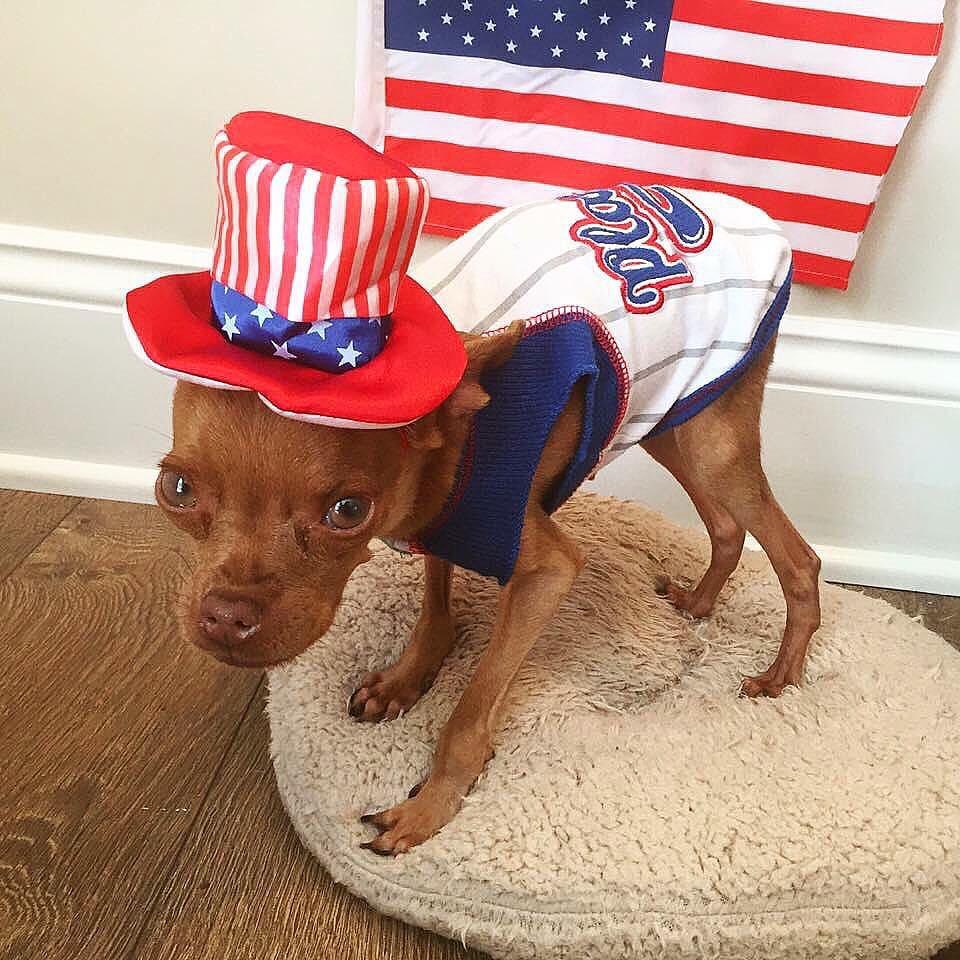If there’s one thing that always leaves me heartbroken, it’s seeing a stray dog already suffering from some sort of medical condition.
The knowledge that they are struggling with survival and some other problem is just sad, and I wish I could help them all.
While that is unrealistic, there are a lot of wonderful people in this world who rescue and adopt mostly dogs with some medical condition.
In Winslow’s case, his mom, Gabby, had saved him from a horrible fate when she arrived just in time for his rescue.
Winslow’s Struggle In Life

When a group of rescuers from California first found Winslow, they noted that he was a stray and didn’t have anyone else.
While it was unclear if that was the case, they knew they had to help him, so they took him back to the shelter.
They found out that he had breathing issues, and they weren’t intending to keep him around for long.
The most likely assumption is that they thought he wouldn’t get adopted because of this, so they were going to euthanize him.

Poor Winslow had suffered so much and he didn’t deserve this. However, things would soon change for him when he met his new mom, Gabby.
On the day of his euthanization, one of the volunteers took him home. Gabby had heard of his story and rushed to his aid.
Gabby told GeoBeats Animals: “What drew me really to Winslow was that I saw this tiny little dog that needed my help, but not just that, he looked like he had this terminal genetic disorder called Mucopolysaccharidosis type VI. And something about him, it just pulled at me.”
Their First Meeting

When she first saw him in person, he was really small and weighed barely over two pounds.
This can be attributed partially to his condition, which also meant that he had a swollen nose, an underbite, and leg deformities.
This meant that he had a lot of internal problems with organs like his heart, lungs, and so on. It was causing a lot of issues for him.
Gabby continues by saying: “Upon first meeting Winslow, he was enjoying a meal of a pollo loco chicken. And here I am taking him in a car somewhere else. He was upset, when I took him away, you know, taking him home.”

When he first entered his new home in California, he immediately got comfortable and took charge. His new mom noticed that he acted so viciously, almost like he owned the house.
However, despite his adorable ferocity, he loved playing with other dogs and the cat in the house and they were always incredibly patient with him.
He also loved to cuddle with his mom, and she would often have to place him on the bed because he was too small.
His mom also loved buying him small clothes so he could wear them during the day and stay warm and comfortable.
Winslow’s Amazing Life

Gabby noted that it wasn’t easy taking care of Winslow because she knew there was nothing she could do to cure his illness. Despite this, she wanted to give him the best life he could have.
She said: “But with my previous experience, with my previous dog that had the same genetic disorder, I was able to push through and just enjoy every day that I had Winslow, every adventure that we had, every trip that we took together.“
He was with her through some of the toughest times and she was there for him. It was just amazing seeing them together.
However, despite her best efforts, Winslow would cross the rainbow bridge shortly after turning three years old.
Gabby misses him dearly, but she will always cherish the amazing memories they created. He was a very special dog, and I am glad to see he enjoyed his life to the fullest in his last days.
Ever noticed your furry companion munching on a stick during your afternoon walk? It’s a common sight that can leave you wondering why dogs have a peculiar fascination with sticks. As a seasoned dog trainer, you’ve probably encountered this behavior countless times. Dogs seem to have an innate attraction to sticks, almost like a magnetic pull that draws them in. You’ve seen dogs of all breeds and sizes happily gnawing on sticks like they’ve found a hidden treasure.
You’ve witnessed firsthand how a simple stick can captivate a dog’s attention for hours on end. From playful chewing to carrying sticks proudly in their mouths, dogs exhibit a range of behaviors when it comes to these natural toys. As a dog lover, you understand that this seemingly innocent habit goes beyond mere playfulness. The allure of sticks to dogs is a fascinating aspect of their behavior that continues to intrigue both pet owners and experts alike.
Understanding Canine Behavior: Why Do Dogs Eat Sticks?
Exploring the Natural Instincts of Dogs
Dogs’ love for sticks can be traced back to their wild ancestors. In the wild, canines would chew on sticks to keep their jaws strong and teeth clean. This primal instinct is still present in our domesticated furry friends today. So, when your pooch grabs a stick, it’s not just play—it’s a throwback to their heritage.
The Teething Stage in Puppies
Puppies, like human babies, go through a teething stage. During this period, their gums are sore, and chewing helps alleviate the discomfort. Sticks are appealing to teething puppies because they provide relief and a satisfying chewing experience. So, if your adorable pup is munching on sticks, it could be their way of soothing those achy gums.
This behavior stems from their natural instincts and developmental stages, making sticks a common chew toy for dogs, both young and old.
Health Implications of Dogs Eating Sticks
Potential Risks and Hazards
Eating sticks can pose dangers to your furry companion. Splinters or sharp pieces from the stick may injure your dog’s mouth, throat, or digestive tract. These injuries can lead to pain, infections, or in severe cases, blockages that require immediate veterinary attention.
When to Consult a Veterinarian
If you notice any signs of distress such as vomiting, drooling excessively, choking, or abdominal pain after your dog has ingested a stick, it’s crucial to consult your veterinarian promptly. They can assess the situation, provide necessary treatment, and ensure your dog’s well-being. Remember, it’s better to be safe than sorry when it comes to your canine friend’s health.
Psychological Factors Behind Stick-Chewing
Boredom and Anxiety in Dogs
When your dog chews on sticks, it could be a sign of boredom or anxiety. Just like humans, dogs can get bored and anxious, leading them to seek activities to relieve these feelings. Chewing on sticks may provide a way for dogs to alleviate their boredom or anxiety by giving them something to focus on and interact with. To help curb this behavior, make sure your dog gets enough mental and physical exercise to keep them stimulated and engaged.
The Play and Prey Drive
Dogs have a natural play and prey drive that compels them to explore their surroundings and interact with objects, including sticks. This behavior harkens back to their days in the wild when they would hunt and play to survive. Chewing on sticks could satisfy your dog’s instinctual drive to hunt or play, offering them a sense of fulfillment and satisfaction. To redirect this behavior, provide appropriate toys and activities that channel their play and prey instincts in a safe and controlled manner.
Preventing Unwanted Stick-Eating in Dogs
Providing Appropriate Chew Toys
When it comes to preventing your furry friend from munching on sticks, divert their chewing behavior by offering suitable chew toys. Opt for sturdy toys specifically designed for dogs to satisfy their natural urge to chew. Look for toys made from durable materials such as rubber or nylon, ensuring they are safe for your pup to play with unsupervised. By giving them the right toys, you can help discourage them from gnawing on sticks.
Training Tips and Behavioral Management
Implementing proper training techniques and behavioral management strategies can aid in curbing your dog’s stick-eating habit. Positive reinforcement training methods, like rewarding good behavior with treats or praise, can help redirect their focus away from sticks. Engage your dog in mental stimulation activities, such as puzzle toys or interactive games, to keep them mentally engaged and less likely to seek out sticks for entertainment. Consistent training and positive reinforcement can effectively discourage unwanted stick-eating behavior in your canine companion.
Conclusion
That’s why your furry friend might be munching on those sticks! Remember, it’s all about satisfying their natural instincts and needs. While chewing on sticks can be fun and beneficial, it’s essential to watch out for any potential risks. Keep your pup entertained with safe toys and activities to prevent stick-eating habits. Stay proactive and provide the right kind of stimulation to keep your dog happy and healthy.
Frequently Asked Questions
Why do dogs love chewing on sticks?
Dogs are naturally drawn to sticks due to their primal need for chewing and play. Chewing on sticks can benefit their dental health and jaw strength, especially for teething puppies.
What are the health risks of dogs ingesting sticks?
Ingesting sticks can pose serious health risks to dogs, such as mouth injuries, choking hazards, digestive blockages, and internal injuries. It is crucial to seek prompt veterinary care if your dog swallows a stick.
How can I address my dog’s stick-chewing behavior?
Dogs may chew on sticks out of boredom or anxiety. Providing mental and physical stimulation through interactive toys and activities can help redirect this behavior and prevent potential health issues.
Why do dogs exhibit a strong play and prey drive when chewing on sticks?
Chewing on sticks may fulfill dogs’ innate play and prey drive, satisfying their instinctual need to hunt or play. It is essential to direct this behavior towards safe toys and activities to ensure their well-being.
How can I prevent my dog from eating sticks?
To prevent dogs from eating sticks, offer suitable chew toys made of safe, durable materials. Implement training techniques like positive reinforcement and mental stimulation activities to discourage unwanted stick-eating behavior.
[no_toc]

Hey there, I’m Janet Brooks, a dog-loving student from California. I’m all about helping pups in need, especially those without homes. Me and my awesome friends work together to give shelter and love to stray dogs. Oh, and I also write blogs about dogs to share helpful info.